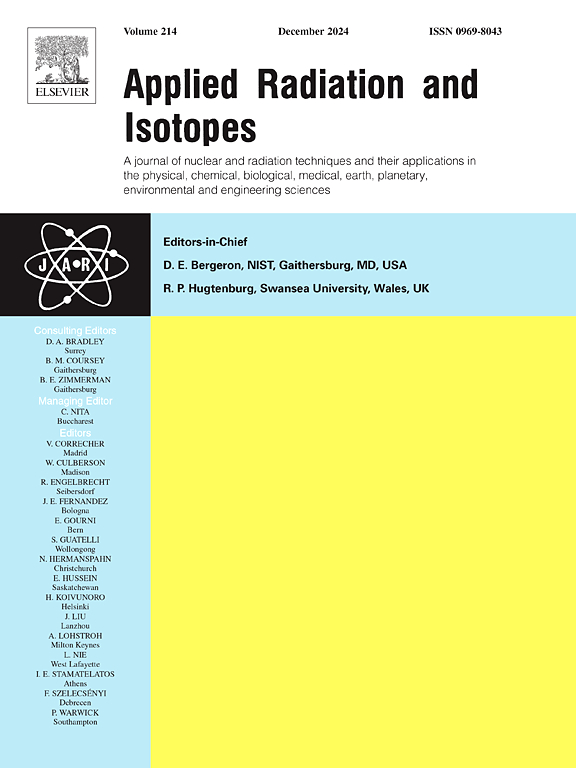Soil-to-banana transfer factor of radionuclides in Lampung, Indonesia
IF 1.6
3区 工程技术
Q3 CHEMISTRY, INORGANIC & NUCLEAR
引用次数: 0
Abstract
This study estimates the soil-to-banana transfer factor of radionuclides in southern of Lampung, Indonesia, a region influenced by a large coal-fired power plant (CFPP) and other heavy industrial activities. This region is renowned for its banana productions, exceeding 11,000 tons annually for both local consumption (notably greater Jakarta) and export. Coal combustion in CFPP concentrates natural radionuclides from a series of uranium and thorium within the resulting ash. Soil and banana samples from Srengsem, Mataram, and Rangai Tri Tunggal villages were analyzed for 226Ra, 232Th, and 40K using a calibrated P-type High-Purity Germanium (HPGe) detector. The study found average activity concentrations in soil were 26 ± 1 Bq kg−1 for 226Ra, 28 ± 1 Bq kg−1 for 232Th, and 368 ± 12 Bq kg−1 for 40K. In banana, 226Ra at 6 ± 1 Bq kg−1 and 40K at 288 ± 10 Bq kg−1 (40K) were detected, while 232Th below of limit detection. The transfer factors for 226Ra and 40K were counted at 0.3 ± 0.2 and 1.6 ± 1.3, respectively, showing medium to high uptake. The estimated effective dose was significantly below the BAPETEN limit of 1 mSv year−1, confirming that bananas cultivated in southern of Lampung area are safe for human consumption with minimal radiological impact. The findings underscore the critical insights into the safety of agricultural products produced in regions impacted by industrial activities and provides data for support the development of robust national food security management strategies.
求助全文
约1分钟内获得全文
求助全文
来源期刊

Applied Radiation and Isotopes
工程技术-核科学技术
CiteScore
3.00
自引率
12.50%
发文量
406
审稿时长
13.5 months
期刊介绍:
Applied Radiation and Isotopes provides a high quality medium for the publication of substantial, original and scientific and technological papers on the development and peaceful application of nuclear, radiation and radionuclide techniques in chemistry, physics, biochemistry, biology, medicine, security, engineering and in the earth, planetary and environmental sciences, all including dosimetry. Nuclear techniques are defined in the broadest sense and both experimental and theoretical papers are welcome. They include the development and use of α- and β-particles, X-rays and γ-rays, neutrons and other nuclear particles and radiations from all sources, including radionuclides, synchrotron sources, cyclotrons and reactors and from the natural environment.
The journal aims to publish papers with significance to an international audience, containing substantial novelty and scientific impact. The Editors reserve the rights to reject, with or without external review, papers that do not meet these criteria.
Papers dealing with radiation processing, i.e., where radiation is used to bring about a biological, chemical or physical change in a material, should be directed to our sister journal Radiation Physics and Chemistry.
 求助内容:
求助内容: 应助结果提醒方式:
应助结果提醒方式:


